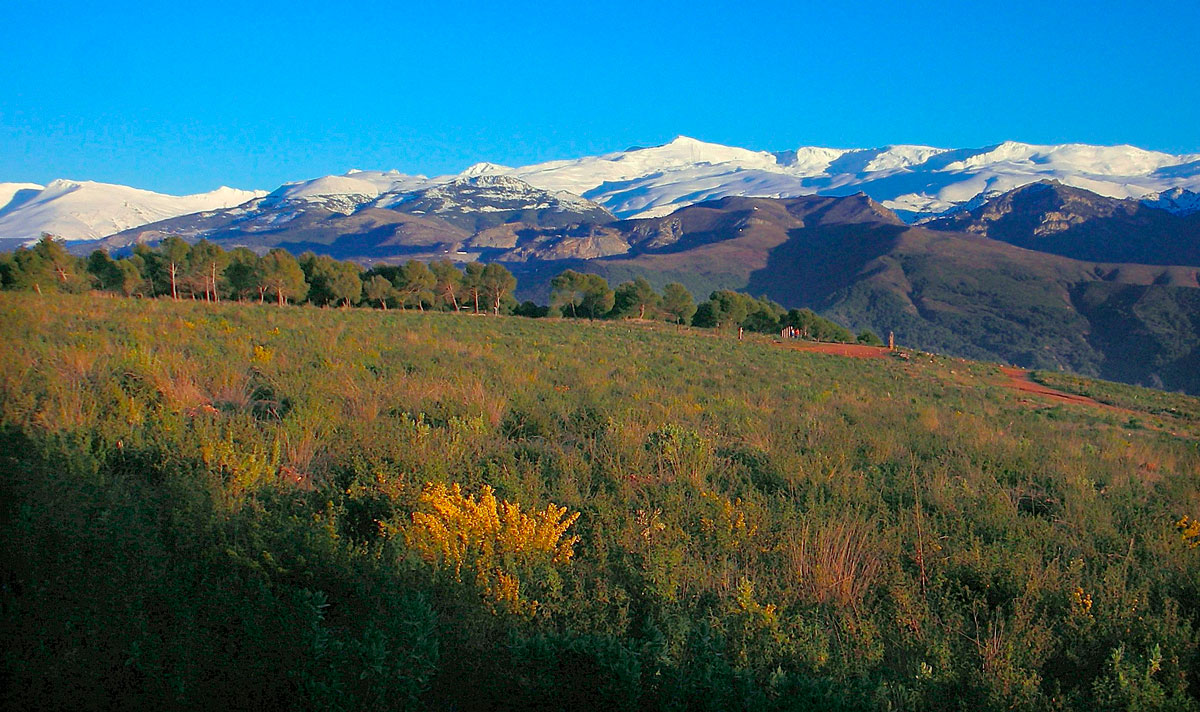Call: (+34) 950 23 51 73 | (+34) 950 23 51 66 | Email: info@hostalmaribel.es
Nº Inscripción de Reg: H/AL/00321
Modalidad: Ciudad
Almería occupies one of the geographical tips of Spain, a privileged point in the southeast of the Iberian Peninsula, looking out to the Mediterranean Sea.
Almeria's strategic location is the reason many different civilizations have made it their home over the centuries. There is evidence of this in the archaeological remains found throughout the province. A very special prehistoric culture left its marks in Los Millares (Santa Fe de Mondújar, just 20 km from the city of Almería, Bronze age) and El Argar ( Antas). Phoenicians, Carthaginians, and Greeks exploited its mines and traded along its coast. The Romans, who established themselves here in the 3erd century BC, turned it into the "Porto Magnus" of the Mediterranean and dominated the area until the arrival of the Visigoths in the 7th century. In the 10th century the Arabs created Almayyat Bayyana (the Scallop Watch over), The present day capital, from where they ruled one of the most important "taifa" kingdoms in Muslim Spain.
The Arabs, who stayed in our lands for almost 8 centuries, have had the strongest influence. There are many munuments that testifyto the rich history of this territory. The castles and the fortresses constitute an exception historical testimony to the societies of the past. Long subjected to border conflicts and the need to defend itself, The province of Almería has a large and varied selection of castles that make up a little known heritage. The economic recovery came about as the result of mining in the 19th century.
The Moorish culture shaped the personality of the capital. From the period of the Emirate, Almería played a major role as the sea harbour and the port of call for trade. However it was during the Caliphate of Abd al-Rahman the third when the city multiplied its number of inhabitants, extended its Alcazaba citadel castle and the solid city walls that protected it; its port became the entrance of the shipping channel for the kingdoms of al-Andalus. The christian conquest forced the Mosque to be made into churches.
The Alcazaba of Almeria, monumental jewel of the city. Dominates the city as a watch over and military defense construction . It is considered the second largest Andalusi construction on the Iberian peninsula after the Alhambra in Granada . The walls that rise to the Alcazaba evoke the strategic importance of capital as a defensive bastion against theBerber pirate attacks in those years when Islam began to break up inthe lands of Andalucía .

The Cathedral of Almería is unique because it is a cathedral -fortress of the XVI -XVII centuries. It has a certain military and defensive air about it that contrast with the subtlety and refinement of the interior where there is mixture of styles as diverse as Renaissance of the ground plan or the Baroque and neoclassical design of the chapels that encircle the main altar.

The capital's cultural significance extends, from the cisterns of Jairán , Civil War shelters, English cable, archaeological museum, Andalusian Centre of Photography , Church of San Juan , the quibla wall and mihrab , and many others.
Almería is a land of contrasts, with natural spaces of great ecological value, from the beaches of Cabo de Gata Natural Park to the peaks of Sierra Nevada. Here are some of the natural areas of the province.
The coastline of the municipality extends over 35 km of which over six correspond to the city. There are 16 beaches with different characteristics, from the urban core , until six beaches
located in the Maritime -terrestrial Natural Park of Cabo de Gata - Nijar, with special environmental protection.

A paradise of delightful coves tucked away among cliffs, long sandy beaches flanked by salt pans and dunes, and clean, crystal clear waters which are an invitation to take a dip. Dry climatic conditions are similar to those that exist in vast territories of North Africa or the Middle East, which identifies this as the most arid enclave of Western Europe.
Considered as the only proper desert area in the European continent and especially noted for its geology. The peculiarities of its landscape and the mildness of its climate are perfect for making movies and some of the world's most famous film stars have trodden these lands.

It includes 15 municipalities in the province of Almeria and 29 in Granada. Here are located the highest peaks of the peninsula, the Mulhacen ( 3,479 m ) and Veleta ( 3,392 m ). Under S ª Nevada and bordering Andarax river, are 24 municipalities in La Alpujarra. Most of the municipalities have their origin in the era of the Muslim rule. The landscape alternating white houses, terraced fields irrigated by canals system, incredible landscapes and peoples of the purest Arabic flavor, with narrow streets and steep.

The landscape alternate with steep valleys and mountain ranges whose summits are covered white in winter. Since ancient times man has sought shelter at the foot of this mountain and major deposits attest. Paleolithic Cave dating Neolithic Ambrose and the Cave of the signs that contains a collection of paintings by well-preserved rock art . With over 7,500 years old and considered one of the most important of the Iberian Peninsula, it is the figure of indalo, symbol of Almeria. You can visit the Castle of the Velez , a jewel of Renaissance style, declared a National Historic Landmark

Is a complex of caves, canyons , sinkholes, and other karst geodes carved by the river waters in gypsum deposit in south of the town of Sorbas, in Almería. Three guided tours, adapted to all audiences, are available.

This wooded oasis between Tabernas Desert and Almería Bay has great ecological significance. Given its value as an ecosystem, it is one of the Sites of Community Importance (SCI) of Almeria.
Founded in 1972, Hostel Maribel, is a family-run establishment. We take care of all the details for our customers and provide a pleasant facility.
We are pleased to have your trust for 50 years.
Address: Av. Federico García Lorca, 153, 04008 Almería (Spain)
Phone 1: 950 23 51 73
Phone 2: 950 23 51 66
Email: info@hostalmaribel.es
